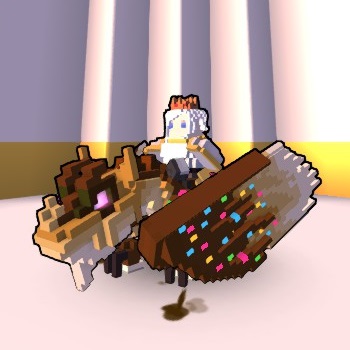

One hundred is a crushingly compact number of slots with which to encapsulate the totality of a medium. This list is not intended to be comprehensive. From there, we address sequences in every decade well into our own era, touching on a range of formats, innovations, and historical moments, from the patenting of rotoscoping to the invention of the multiplane camera to the rise of anime and everything in between and after. The arc of this history begins in 1892, the year Charles-Émile Reynaud first used his Théâtre Optique system to screen his moving pictures - to our mind, the first animated cartoons ever produced - for the public (and long after the invention of the magic lantern). By focusing on sequences, we can let creators and their individual decisions shine in a way full-length works may not.
#Trove where to find primal blue blocks full#
Focusing on full cartoons would create a bias in the favor of studios with the resources to produce theatrical features - but history has shown that many landmark achievements in animation have been produced with a variety of budgets, formats, and lengths. We chose the deliberately flexible element of a “sequence” because it felt the most focused: It is often in one inspired moment, more so than a single frame or entire work, that we are able to see the form progress. To capture an idea of that power and to narrate its history, we have charted the evolution of animation by considering 100 sequences throughout the medium’s history. Today, vast audiences understand what artists like McLaren were observing: that the invisible holds a marvelous power over us. The characters and intellectual properties it has drawn into existence are as relatable as Daffy Duck and as lucrative as Mickey Mouse. The medium that began to crawl thanks to the live performances of inventor Charles-Émile Reynaud and illusionist Georges Méliès has now matured into a complex and diverse art form - one that has seen new processes and cultural innovations in every decade since its inception. Animated cartoons fool the brain into believing that static images can move characters are “brought to life” by putting pen to paper or finger to a computer’s trackpad. That has largely remained true throughout the medium’s history, both frame by frame and over the course of a two-hour children’s movie. “Therefore, animation is the art of manipulating the invisible interstices between frames.”

“What happens between each frame is more important than what happens on each frame,” the prominent experimental animator Norman McLaren (who makes the list with his short Neighbours, below) once explained. If you take an image of an open hand and an image of a fist and project the two in sequence, you’ll convey the illusion of a clench. It’s right there in the name of one of the earliest devices used to project slides: the magic lantern. All animation, whether it depicts a whistling mouse, a walking dinosaur, or a leaping superhero, is a kind of magic trick.


 0 kommentar(er)
0 kommentar(er)
